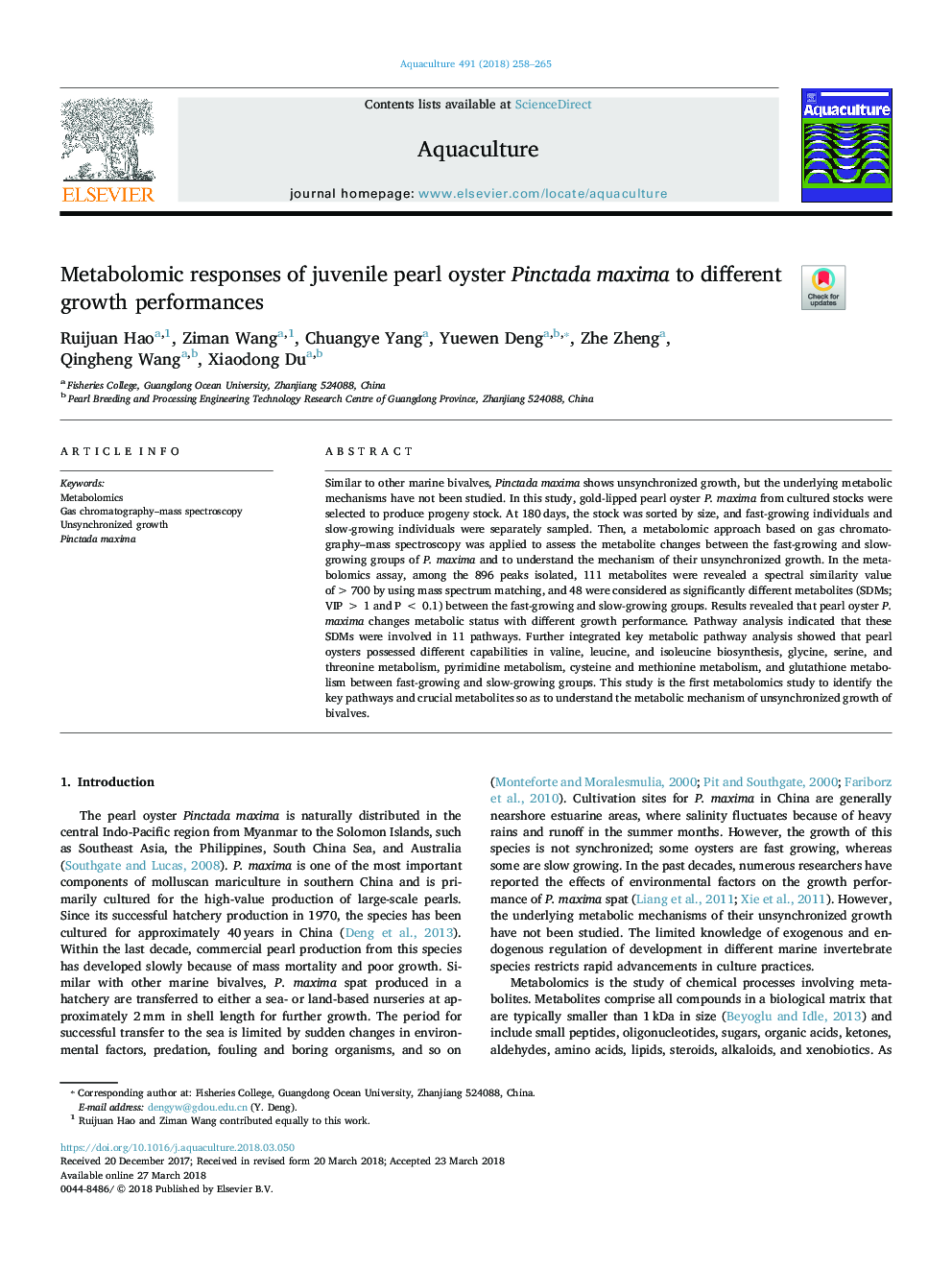| Article ID | Journal | Published Year | Pages | File Type |
|---|---|---|---|---|
| 8493258 | Aquaculture | 2018 | 8 Pages |
Abstract
Similar to other marine bivalves, Pinctada maxima shows unsynchronized growth, but the underlying metabolic mechanisms have not been studied. In this study, gold-lipped pearl oyster P. maxima from cultured stocks were selected to produce progeny stock. At 180â¯days, the stock was sorted by size, and fast-growing individuals and slow-growing individuals were separately sampled. Then, a metabolomic approach based on gas chromatography-mass spectroscopy was applied to assess the metabolite changes between the fast-growing and slow-growing groups of P. maxima and to understand the mechanism of their unsynchronized growth. In the metabolomics assay, among the 896 peaks isolated, 111 metabolites were revealed a spectral similarity value of >700 by using mass spectrum matching, and 48 were considered as significantly different metabolites (SDMs; VIPâ¯>â¯1 and Pâ¯<â¯0.1) between the fast-growing and slow-growing groups. Results revealed that pearl oyster P. maxima changes metabolic status with different growth performance. Pathway analysis indicated that these SDMs were involved in 11 pathways. Further integrated key metabolic pathway analysis showed that pearl oysters possessed different capabilities in valine, leucine, and isoleucine biosynthesis, glycine, serine, and threonine metabolism, pyrimidine metabolism, cysteine and methionine metabolism, and glutathione metabolism between fast-growing and slow-growing groups. This study is the first metabolomics study to identify the key pathways and crucial metabolites so as to understand the metabolic mechanism of unsynchronized growth of bivalves.
Related Topics
Life Sciences
Agricultural and Biological Sciences
Aquatic Science
Authors
Ruijuan Hao, Ziman Wang, Chuangye Yang, Yuewen Deng, Zhe Zheng, Qingheng Wang, Xiaodong Du,
